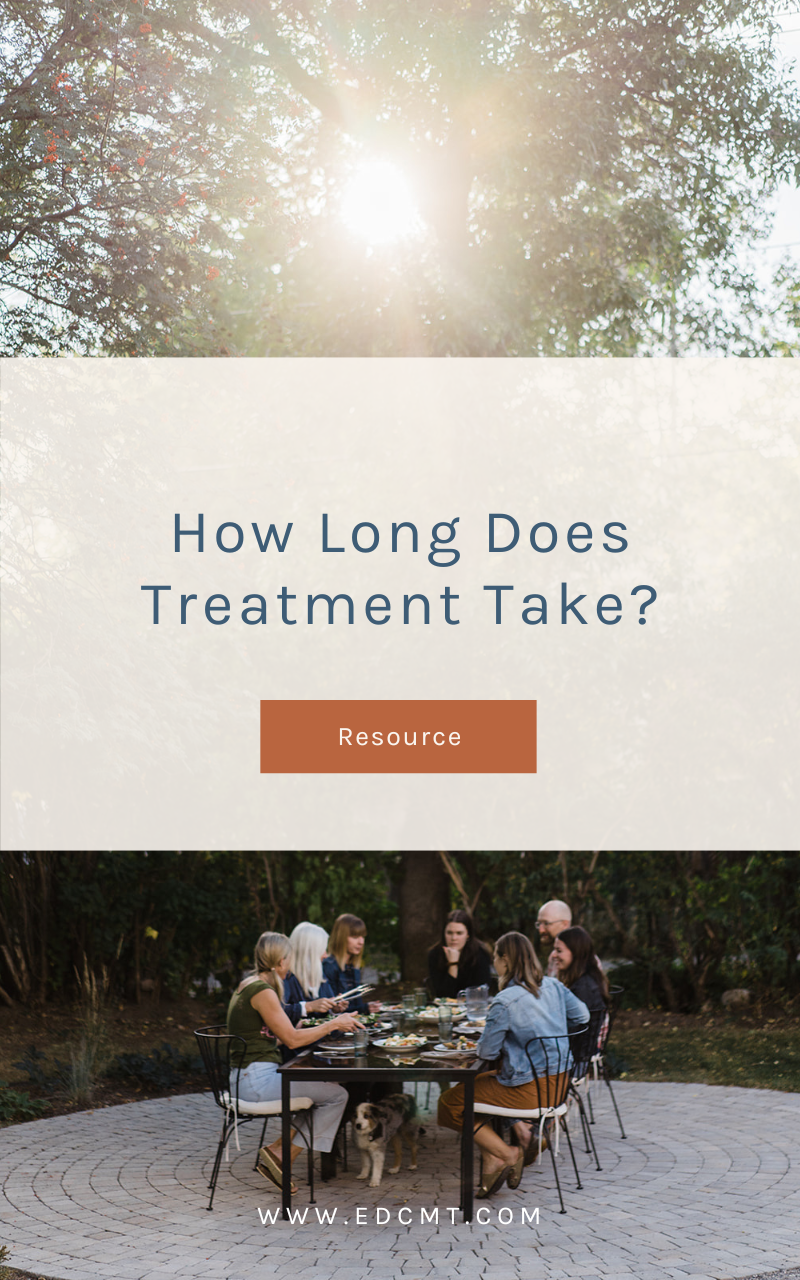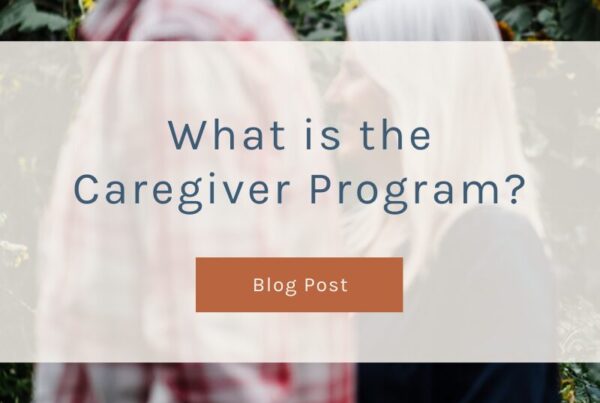
Ask a civil engineer how long a bridge needs to be, and the answer is always going to be: “It depends on the river.”
We are frequently asked how long treatment for eating disorders will take. As much as we would like to give an easy and simple answer that our patients could schedule their lives around, the answer is always going to be: “It will be different for every person.”
Some patients are in treatment for 3 to 6 weeks, some for 3 to 6 months, and others longer. It depends on the person, the eating disorder, their family situation, the level of severity, and more. Patients who have struggled for years with their eating disorder will often be in treatment for a longer period of time as they work to overcome their eating disorder behaviors that have had years to take root.
We recommend pursuing treatment early, whenever possible, especially for adolescents because of the strong correlation between length of illness and length of treatment. It can be the difference between spending weeks versus months or years or being in outpatient care versus a higher level of care, like our day treatment program at the Voss.
At EDCMT, we practice a type of experiential dynamic therapy (EDT) called Intensive Short Term Dynamic Psychotherapy (ISTDP). Research1, and our experience at EDCMT, has shown that ISTDP can lead to rapid and lasting results for many types of clinical mental health conditions, especially those that can be be difficult to treat, like eating disorders
As humans, we experience complex mixed emotions in our relationships which, depending on our unique interpersonal experiences, can induce a spectrum of physiological anxiety responses. Emotions, once considered dangerous to our past relationships, become stirred up in new relationships, making us anxious, which then leads us to engage in a number of ways to cope with the anxiety and ward off perceived danger. The ineffective ways we cope (aka our “defenses”) often become the source of our current suffering (e.g., an eating disorder).
For example, if my caregiver was very depressed when I was a child, I might have learned my joy or playfulness was too much for them and I would become anxious instead of showing my feelings. Similarly, if my sadness or anger was distressing to my caregiver, I’d experience anxiety when these emotions came up, eventually learning to hide (suppress) emotions that I had learned were harmful to my caregiver. In time, I might become unaware of these emotions all together, which is what therapists call “repression.”
With an ISTDP approach, we pursue exploration of these emotional experiences in order to gain relief from the anxiety and defenses which have come to dictate our lives. By compassionately identifying and going against these defenses as they arise during the therapy session, ISTDP has been found to be more rapidly effective than standard talk therapy2 at achieving client-declared goals, and produces lasting changes, insight, and relief of suffering.
Ultimately, treating the eating disorder involves actively working with these defense mechanisms, which means anxiety is most likely going to increase in the beginning of treatment. Meeting with a dietitian and accepting consistent nutrition challenges the way we have coped with anxiety in the past, and so we actively – in both group and individual therapy – learn and practice new ways to regulate anxiety. Once we can regulate anxiety, we can learn to trust and experience the unconscious emotions that have become hidden from view.
Experiencing these emotions reduces the anxiety of keeping the emotions in, and reduces the overall need for the ineffective coping mechanism (e.g., eating disorder behaviors and thoughts). Disordered eating patterns and the thought patterns that support them, are, in short, an unconscious effort to stop hurting because anxiety is so uncomfortable! Consequently, the same patterns that work to prevent pain, can also block our ability to feel all the good emotions in life too.
Treatment based on ISTDP principles bring a mindful focus to feelings, anxiety and all these coping mechanisms so that client and therapist can together restructure the maladaptive system of defense (our eating disorder) and release food and/or our bodies from being the problem.
In eating disorder treatment, we often say: “It’s about the food, and it’s not about the food.” We have sought a treatment model to help get underneath our patients’ preoccupations with food and body. By clarifying, naming, and understanding the strategies of defense that were originally sought out by our patients to help them survive emotional ruptures, we can slowly but surely dismantle them and reach towards the adaptive emotions that will bring our patients into a life sustaining relationship with eating, body, exercise, and relationships, including their relationship with their self.
While “short term” is part of the ISTDP name, ISTDP is not always short term. Like many life changing experiences, ISTDP can be a long term process, depending on the person. Either way, our focus is to help food be food and trust feelings to secure the freedom to love, learn, connect, and heal in sustainable ways.
Thank you to Jeni Gochin, LMFT, LCPC, and Hannah McKinney, PhD, MS, PCLC, for their assistance and expertise on this post.
1) https://www.youtube.com/watch?v=lyAH7rkrnoc
2) Abass, A. (2002) “Intensive Short-term Dynamic Psychotherapy in a Private Psychiatric Office: Clinical and Cost Effectiveness”. The American Journal of Psychotherapy. 56(2), 225-232. https://psychotherapy.psychiatryonline.org/doi/epdf/10.1176/appi.psychotherapy.2002.56.2.225





